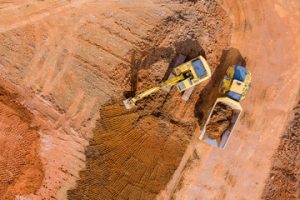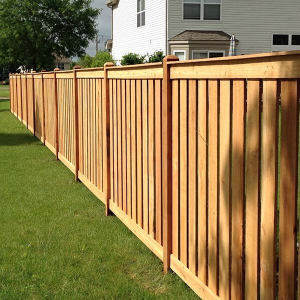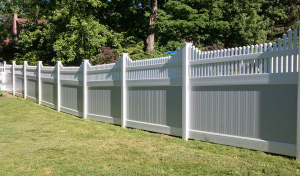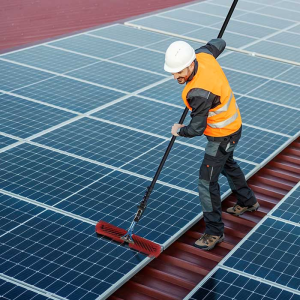A professional excavation contractor works to set the foundation for construction projects. Their work involves more than digging; it also includes land development and strategic planning.

They sculpt precise foundations to meet the requirements of building structures. In addition, they complete grading and drainage correction tasks to optimize the movement of water.
Digging is the process of removing soil or rock to prepare for construction, including foundations and structures. It can also be used to install buried utilities, such as water and sewage pipes, power lines, and gas lines.
Digging a new building’s foundation is one of the most important steps in construction. Without a solid foundation, buildings will be susceptible to structural instability, flooding, and other issues that can be costly to repair or replace. Proper excavation ensures a strong, stable base for any structure and enables it to withstand natural disasters like hurricanes and typhoons, as well as man-made disruptions, such as traffic congestion or power outages.
The first step in the excavation process is a thorough site survey to identify and mark the location of any underground utilities. This allows excavation to take place safely, minimizing the risk of damage to critical infrastructure.
Another important step in the excavation process is obtaining any necessary permits and approvals. This can be a time-consuming and complicated process, especially when working on large projects in populated areas. During the excavation process, a variety of different techniques and tools can be used, depending on the type of material being removed and the site conditions.
In addition to preparing the site for construction, excavation can also be used to uncover artifacts and other objects of historical or archaeological interest. This can provide valuable insights into the culture and history of an area, as well as help to better understand the environment.
While excavating and digging may sound similar, there are several key differences between them. Excavation is typically done for construction or engineering purposes and requires heavy machinery such as excavators, backhoes, and bulldozers. Digging, on the other hand, can be done by hand or with smaller equipment like shovels and spades.
To maximize the efficiency of your excavator, it’s important to know where to position your spoil pile. If it’s too far away, it can limit mobility and force you to make more back-and-forth trips. It’s best to keep the spoil pile within the excavator’s optimal digging envelope. This will enable you to reach the bottom of your bucket with every pass, reducing wasted effort and limiting unnecessary strain on the machine.
Leveling
A crucial aspect of any construction project is leveling, which involves reshaping the land to meet specific design requirements. Unlike excavation, which involves digging and removing soil, leveling focuses on moving and redistributing existing dirt to achieve the desired slopes and elevations. This process also helps ensure proper drainage, which prevents water buildup and enhances the longevity of built environments.
Using heavy equipment such as bulldozers and excavators, contractors grade sites to create a flat surface and prepare the ground for future projects. This is an important step because it allows builders to create a solid foundation for new structures, and reduces the chance of accidents on the construction site. It also helps mitigate environmental concerns and other natural hazards, such as buried debris or underground water lines.
While leveling, contractors also dig holes for foundations and trenches to facilitate infrastructure installation and address other critical construction tasks. Some construction projects require deep trenches, including those for water and sewer pipes, electrical cables, and other utilities. This is a delicate and time-consuming excavation practice, as workers must dig through the soil to ensure that they are not removing any valuable material or causing damage to existing structures.
To minimize the risk of landslides and machine breakdowns, excavators must be carefully managed during this phase. For example, they must be positioned perpendicular to the slope so that they do not cause further erosion or destabilize the excavation site. They also must perform regular inspections to identify any potential hazards or issues.
A specialized attachment on the front of an excavator can help level and grade terrain efficiently. It projects a straight-line laser onto the site for a consistent reference point, and assists operators in matching the excavator’s contour with surrounding terrain. Additionally, the grading bucket’s hydraulic thumb cradles debris and evenly distributes dirt as it moves across the ground.
To maximize the safety of workers during excavation, contractors should use a variety of tools and implement a comprehensive site inspection plan to ensure that the construction process is running smoothly. This includes implementing trench safety measures to protect workers from cave-ins and other hazards. Moreover, workers should wear personal protective equipment such as hard hats and gloves to minimize injuries from falling objects or other hazards.
Integrating Vital Infrastructure
An excavation contractor’s responsibilities go far beyond digging holes. They also include site preparation, heavy machinery operation, grading, trenching, and other essential services. The work that these professionals do is vital to construction projects, as it provides the groundwork upon which buildings, roads, and other infrastructures can be built.
In many cases, the work of an excavation contractor goes unnoticed, but they’re truly essential to bringing construction projects from concept to completion. By completing crucial tasks such as clearing the way for new structures, leveling land, and laying foundations, they’re making sure that construction projects can move forward and that all the components of a building or road will be properly integrated to ensure its integrity and longevity.
One of the most important tasks that excavating contractors perform is digging for and integrating utility lines. This process involves carefully avoiding existing underground utilities and ensuring that the new line is placed correctly. It’s an extremely sensitive and complex task that requires extensive experience and attention to detail.
Excavating contractors also handle the demolition of existing structures and other natural obstacles to clear the way for construction work. This is a critical service that often needs to be done in accordance with environmental regulations and other project specifications.
While a homeowner might be able to rent heavy equipment like a bulldozer or an excavator, hiring a professional excavation contractor can help them get the job done more efficiently and safely. This is especially important if they want to avoid damaging private or public water lines, sewer lines, electrical lines, or gas pipelines.
When choosing an excavation contractor, look for one with extensive experience and a track record of meeting deadlines and budgets. Asking them to provide client references and a detailed project proposal can help you gauge their reliability. You may also want to make sure that they have the proper insurance coverage to protect your property in case of any damages that occur during the excavation process. For example, most standard homeowner’s insurance policies don’t cover damage to underground utilities and sewer lines.






